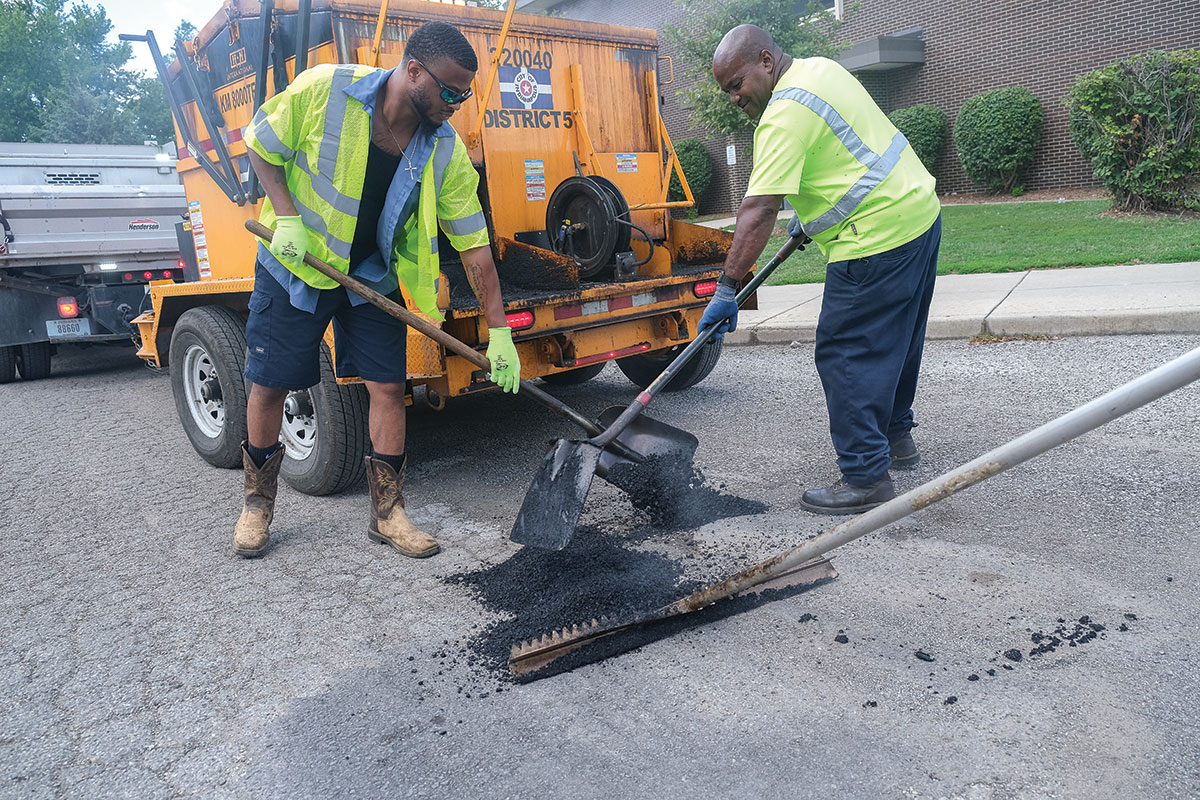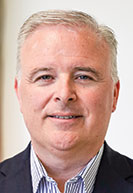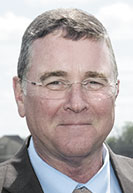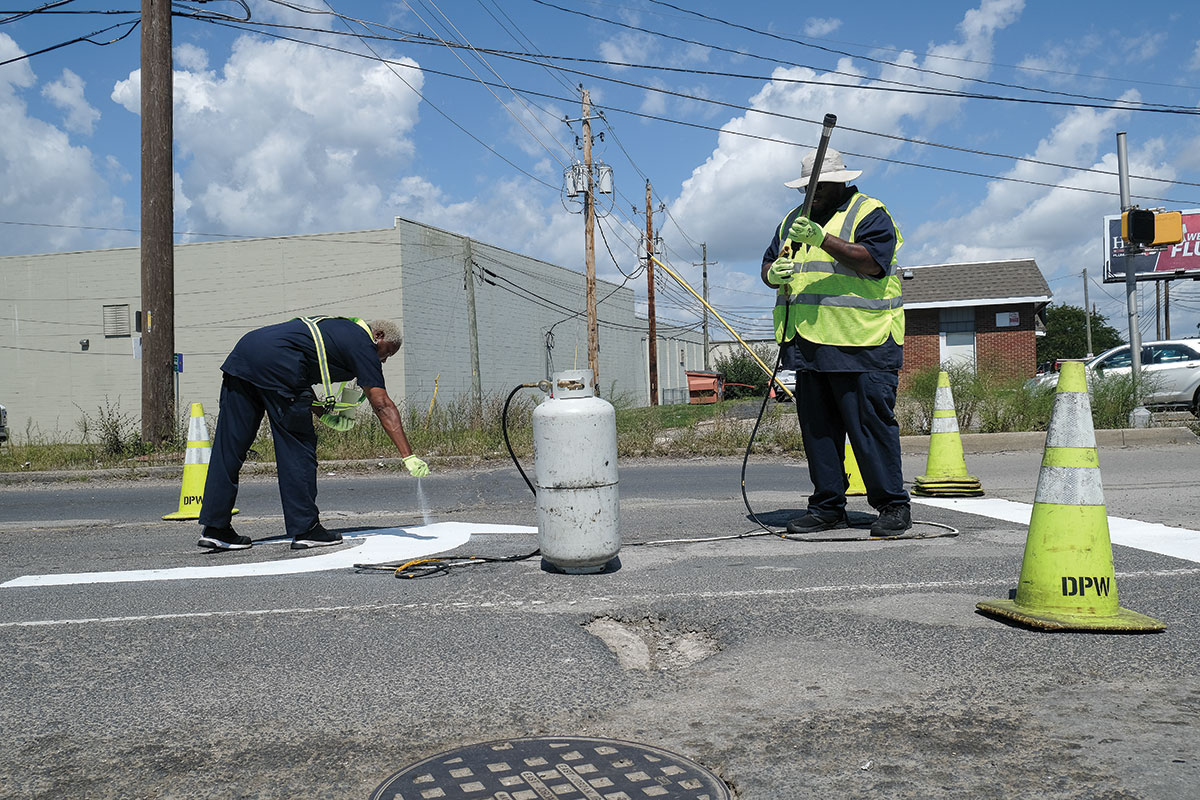Subscriber Benefit
As a subscriber you can listen to articles at work, in the car, or while you work out. Subscribe Now
For decades, Indianapolis leaders have pleaded with state lawmakers to change the state’s formula for funding local roads to end favoritism toward rural counties with sparse traffic.
Armed with new data that shows suburban counties are also getting the short end of the stick, Indianapolis officials now hope an alliance with other central Indiana leaders will finally persuade legislators to either alter the formula or find other ways to provide more infrastructure dollars to densely populated areas.
In 2021, the state allocated $663 million in road funding to local governments. Marion County received just over $30 million of that, or about 4.5%.

While Marion County maintains about 8,400 miles of roadway measured by lane miles traveled, it receives funding for only about 3,300 of those lane miles, according to Dan Parker, the new chief of staff for Indianapolis Mayor Joe Hogsett and outgoing director of the city’s Department of Public Works.
That leaves a 5,100-mile gap, Parker said, because Indiana’s road funding formula allocates gas-tax funds and other revenue by center-line miles rather than by vehicle miles traveled.
Center-line miles simply measure the length of a road, while vehicle miles traveled per capita is calculated as the total annual miles of vehicle travel divided by the total population in a particular region.
The state formula benefits thinly populated counties with fewer vehicle miles traveled and generally few lanes.
In fact, a new study commissioned by the city shows Marion County would rank dead last in funding received if measured by lane miles traveled—which is a county’s vehicle miles traveled divided by county population.
The study conducted by the Indianapolis-based Policy Analytics found the eight suburban counties in the Indianapolis metropolitan statistical area also fell in the bottom third in terms of funding by local vehicle miles traveled. Ohio County, the smallest and least populous county in the state, received the most funding under that model.
“To us, that was sort of like, ‘Well, wait a minute. That doesn’t make sense,” Parker said.
The analysis comes less than six months after a report by Indianapolis-based engineering firm HNTB Corp. found the city faced an average annual funding gap of $1.07 billion for all its roads and transportation infrastructure. Not including work for residential pavements, sidewalks and pedestrian bridges, the funding gap is $195 million to $230 million annually, the report found.
The study also examined INDOT’s Community Crossing Program, a matching grant program that awards up to $1 million to municipalities to fund improvements to roads and bridges. Like the gas-tax formula, the program favors small, rural communities by not accounting for factors like traffic, density or population when awarding grants.
Marion County receives about 12 cents for every dollar it generates for Community Crossings, while Ohio County gets $4 for every dollar it contributes, the analysis found.
“Both of these programs are just fundamentally not equitable,” Parker said. “Part of the historical underfunding of Indianapolis infrastructure has occurred because we have so much and over the years haven’t gotten enough money back.”
The state’s gas tax is set to increase on July 1, 2023, and again on July 1, 2024. Parker is hoping state officials will consider allocating more of those extra dollars to urban areas.
“Our argument to the state is, ‘You’re subsidizing road funding to parts of the state that have the least amount of traffic,’” Parker said. “The gas-tax formula isn’t just an Indianapolis problem, and I think this describes it.”
Getting the suburbs involved
Living in the Indianapolis suburbs has its benefits. Peace and quiet from the big city while in close proximity to its amenities, and newer roads with far fewer potholes.
But over time, those roads will age and require more frequent maintenance. Eventually, they might have to be rebuilt altogether—a costly endeavor for any municipality—as is the case for many of Indianapolis’ arterial roadways.
Suburban mayors are becoming acutely aware of this conundrum, recognizing that the state’s funding formula will put their municipalities at a disadvantage in the years to come.
The Policy Analytics study found that, in the Indianapolis metro area, Hendricks County fared the worst, ranking 90th for road funding for local vehicle miles traveled. Hamilton County was next, at 86th.


“The conversation about road funding is no longer urban versus suburban,” said Fishers Mayor Scott Fadness. “It’s really more of a discussion about populated versus non-populated areas.”
Carmel Mayor Jim Brainard said he supports changing the road formula, noting that Indianapolis is home to major universities and state government facilities that don’t pay property taxes.
“There should be an allowance in the road funding formula that helps them take on that burden,” Brainard said.
Greenwood Mayor Mark Myers called the formula “antiquated” and said central Indiana might also have to rely on federal funding to fix its infrastructure if the state fails to act.

“As our roads continue to grow, it just becomes more and more costly to try to build the roads out with the funding mechanism that we currently have,” Myers said.
‘A tough sell’
The Legislature is controlled by a Republican supermajority that represents mostly rural areas of the state. Given that changing the formula would pull money from rural districts, there has been little incentive for Republican legislators to tweak it.
“That’s going to be a tough sell,” Westfield Mayor Andy Cook said. “But I think that we can demonstrate the need.”
Previous efforts to influence lawmakers to alter the equation haven’t made it far. But the recently formed Central Indiana Regional Development Authority, whose members include Anderson, Carmel, Fishers, Indianapolis, McCordsville, Noblesville, Westfield and Zionsville, hopes its collective voice will be heard during next year’s General Assembly.
Lebanon Mayor Matt Gentry said the RDA is an outgrowth of the Central Indiana Council of Elected Officials, a political organization representing elected leaders in the region.
“We are all trying to understand our different strengths,” Gentry said. “We all feed off of each other.”

Chris Jensen, mayor of Noblesville, said he hopes the Statehouse will recognize the need to adjust the funding formula when presented with new data.
“We are showing the policymakers who dictate the road funding formula where that growth is happening, where that economic data and economic dollars are being generated,” Jensen said, “and we’re gonna make the best case for adjusting that possibly going forward.”
“I do expect the [RDA] to really try to come to the Legislature with a set of solutions or ideas, not just complaints,” Fadness said.
At a recent luncheon hosted by the OneZone Chamber of Commerce—a partnership formed by the Carmel and Fishers chambers—Gov. Eric Holcomb touted the state’s faster population growth from 2010 to 2020 than that of its Midwestern neighbors. What he didn’t mention was that most of that growth—74%—happened in the Indianapolis metropolitan area, which makes up 31% of the state’s population.
Despite the metropolitan area’s outsized importance in the state economy, its roads continue to be neglected, Parker said. If the funding formula stays as is and suburban counties continue to grow, these areas will ultimately also be punished for having more infrastructure.
“If this isn’t changed, [municipalities] will have to start doing an exercise like us, where you have to pull even more resources from other places to handle your infrastructure spending just to keep up,” he said.•
Correction: The original version of this story incorrectly reported that lane miles were the same as vehicle miles traveled. The story has been changed to accurately reflect the difference.
Please enable JavaScript to view this content.

Within a one mile radius of where I am right now in Marion County sits at least 4x the population of Ohio County. But apparently we’re worthy of 20x less road funding.
The GOP is an antiquated extremist party that is falling apart. They only care about their narrow base. GOP first, definitely not Indiana or America first. MRGA. Make Republicans great Again. Their leader is a criminal so it’s not surprising.
Grow up
Technical point: VMT is not the same as lane miles.
Lane miles are as described: length of a street time the number of lanes wide.
VMT is a measure of road use, the distance traveled per vehicle per year on all streets, roads, and highways.
Good catch. The story has been corrected.
If this happens, the State should also repeal the permanent downtown TIF District.
Why? The two are unrelated. TIF involves property taxes, which do not fund roads.
Because the downtown TIF is an unjust mechanism. They don’t have to be related. Most legislative compromise isn’t.
While I don’t support this, it’s worth noting that Indianapolis is the only city in the state that’s allowed to have a permanent TIF like that. There’s a ton of special purpose legislation that benefits Indy in addition to that which disadvantages it.
So now that’s it’s affecting them the Retrumplican dominated suburbs see the problem? Better late than never!
We have a winner..